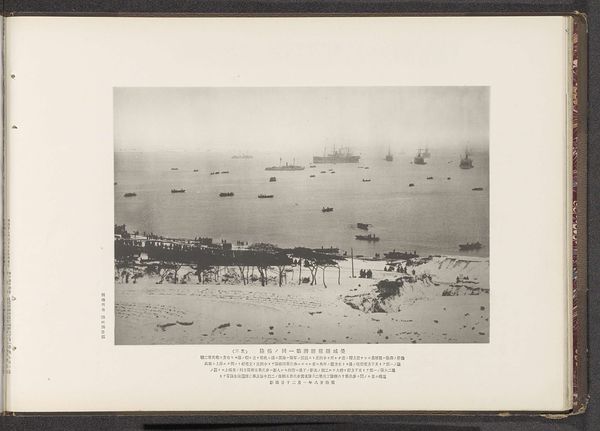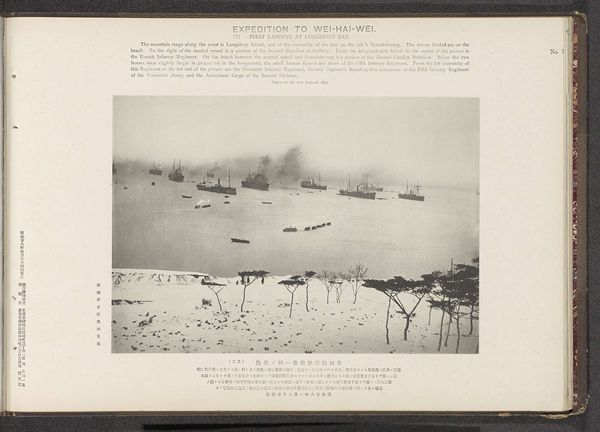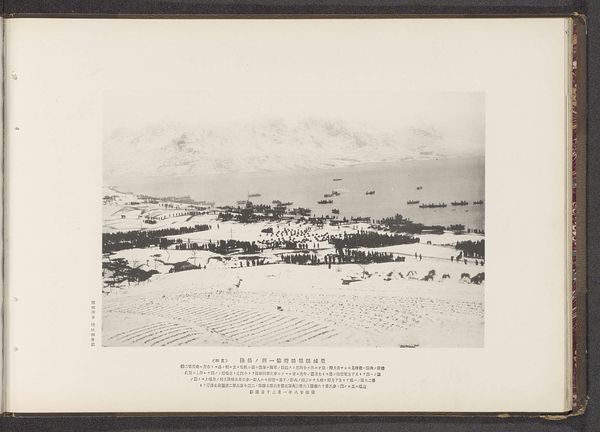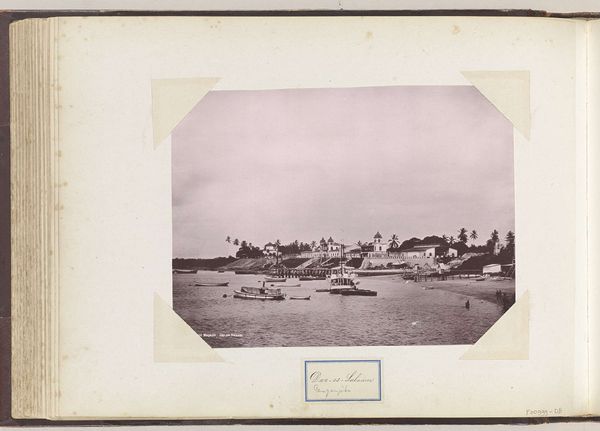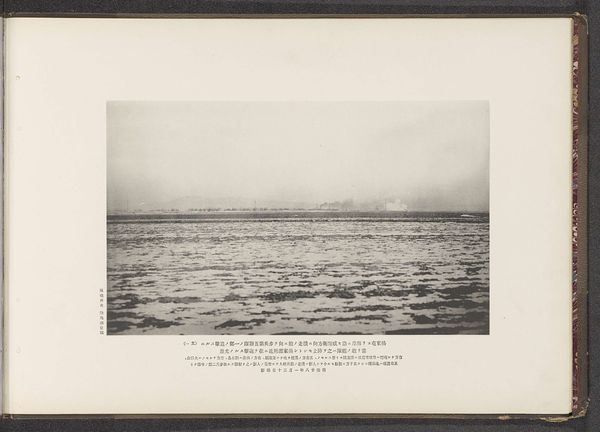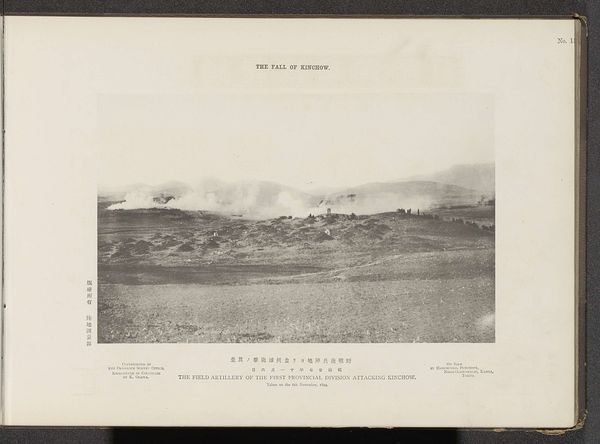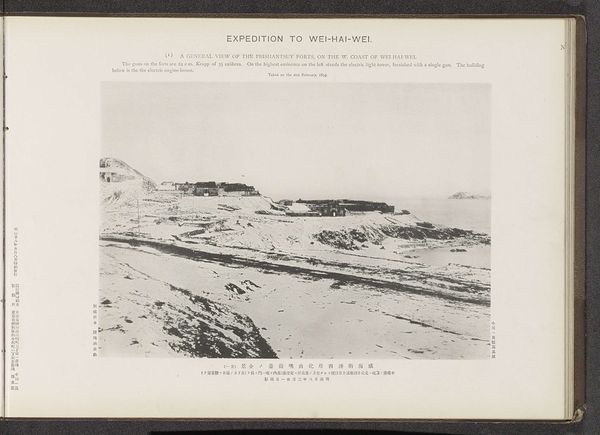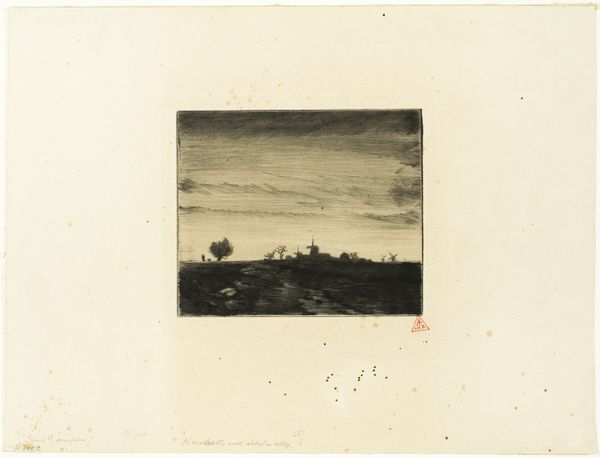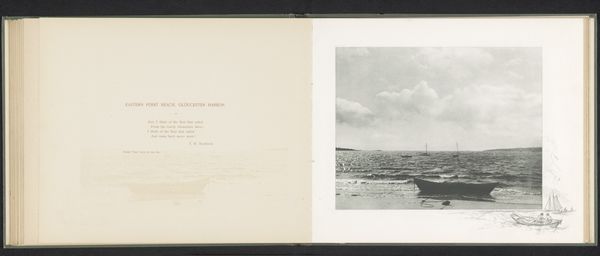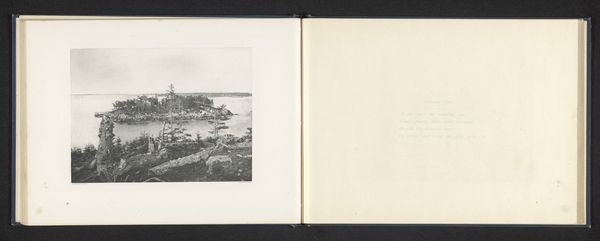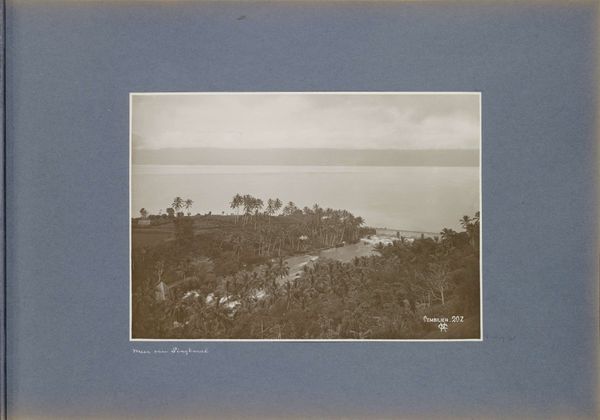
photography, gelatin-silver-print
#
landscape
#
photography
#
coloured pencil
#
orientalism
#
gelatin-silver-print
Dimensions: height 194 mm, width 290 mm
Copyright: Rijks Museum: Open Domain
Curator: The atmosphere in this photograph is rather austere, wouldn't you agree? There's a vast expanse of shore meeting a steely, grey sea. Editor: It does feel subdued. The greyscale palette really focuses my attention on the land itself and how the material will be moved and utilized. This gelatin-silver print, "First Landing at Lungshwy Bay," likely dating back to 1895 and taken by the Ordnance Survey Office, shows a moment rife with labor implications. Curator: Note the way those stark trees in the foreground frame the scene—they look as though they could have witnessed countless arrivals and departures. There’s an enduring quality to this composition—timeless, even, in its portrayal of land meeting water. Also the way they guide your eyes to the figures assembling further along the bay. Editor: True, but the photograph also depicts the beginning of infrastructure: docks being built perhaps? Temporary or permanent encampments would require constant material upkeep. You can just sense the potential that such raw landscapes represented. What resources might this area contain? How could it become materially profitable? Curator: Indeed, it also embodies that colonial spirit of exploration. “Orientalism” it is labelled. One can read in the image that quest for “new” horizons, and maybe, more soberingly, what that desire for “newness” actually entails. Editor: "First Landing"—the very title declares an action of territorial acqusition. Look closer at the print and see the markings: it's been annotated with what appears to be coloured pencil, drawing extra emphasis. The physical act of drawing directs my attention back to human alteration of spaces to emphasize claim and territory. It wasn't merely documentation. Curator: Those traces certainly seem potent—these additional embellishments on the original photographic plate signal intention. By emphasizing these locations on the land and water, what might one expect the photograph’s viewer to imagine? It feels less passive now, doesn't it? Editor: I agree, this photo doesn’t rest simply on capturing an image. These added manipulations push the piece into a different type of material statement. It reminds us to think more about who controlled both image production and also land acquisition back then. Curator: Well, contemplating those colonial layers is always revealing. Thank you for underscoring that so incisively here. Editor: It only goes to show that examining the artistic practices is truly as important as admiring aesthetics!
Comments
No comments
Be the first to comment and join the conversation on the ultimate creative platform.
